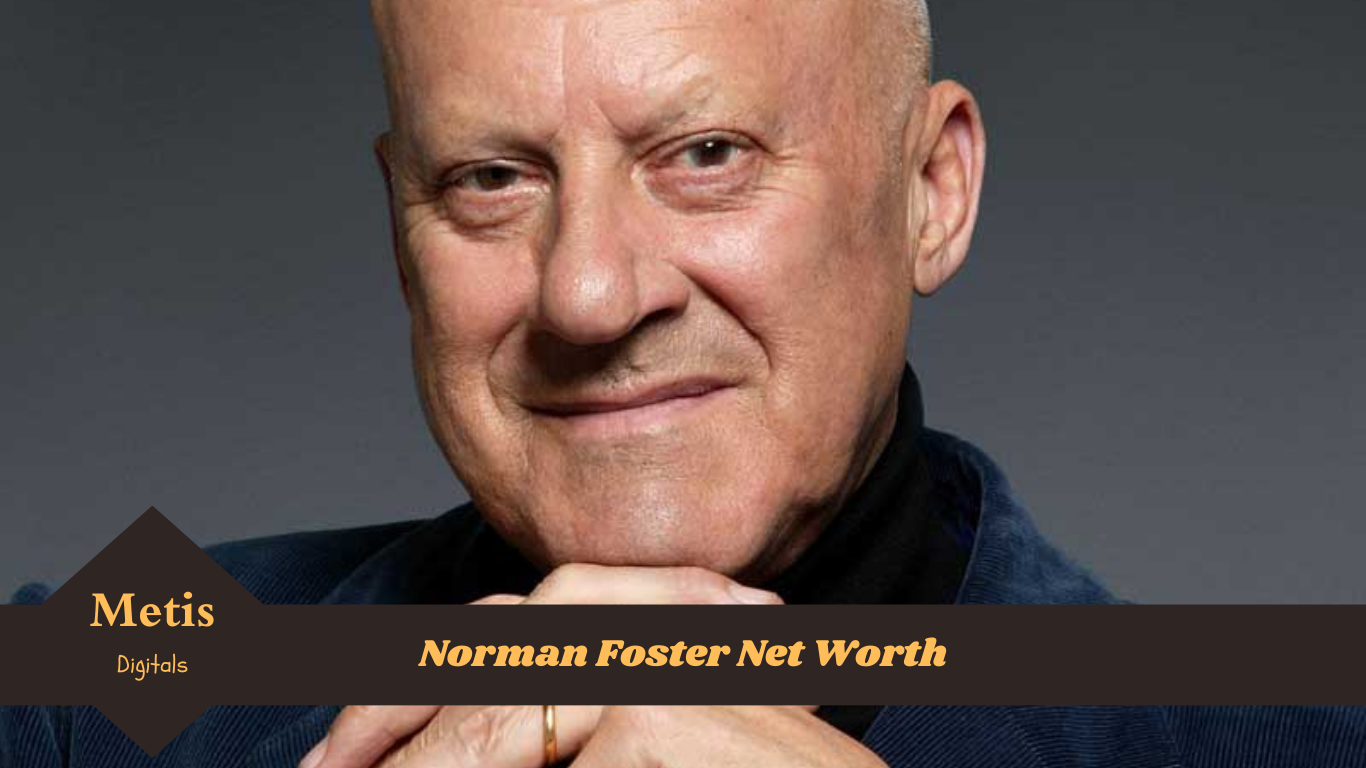Norman Foster, one of the most renowned architects of the modern era, has left an indelible mark on the architectural landscape with his innovative designs and groundbreaking projects. His contributions to architecture have not only earned him global recognition but also a substantial fortune. This article explores Norman Foster’s net worth in 2024, his career highlights, personal life, and recent developments.
Early Life and Education
Norman Robert Foster was born on June 1, 1935, in Reddish, Stockport, England. He grew up in a working-class family and showed an early interest in architecture. Foster attended Burnage Grammar School for Boys in Manchester, where he excelled academically. After completing his national service in the Royal Air Force, Foster pursued his passion for architecture at the University of Manchester’s School of Architecture and City Planning.
Upon graduating in 1961, Foster received a fellowship to attend Yale School of Architecture in the United States, where he earned a master’s degree in architecture. At Yale, he studied under the influential modernist architect Paul Rudolph and was exposed to the work of prominent architects such as Frank Lloyd Wright and Le Corbusier, which profoundly influenced his design philosophy.
Career Beginnings and Formation of Foster + Partners
After completing his studies, Norman Foster returned to the UK and co-founded Team 4 in 1963 with Richard Rogers, Su Brumwell, and Wendy Cheesman. The firm quickly gained recognition for its innovative designs and modernist approach. In 1967, Foster established his own practice, Foster Associates, which later became Foster + Partners.
Foster + Partners rapidly grew into one of the world’s leading architectural firms, known for its high-tech design and sustainable building practices. The firm’s early projects, such as the Willis Faber & Dumas Headquarters in Ipswich (1975) and the Sainsbury Centre for Visual Arts in Norwich (1978), showcased Foster’s ability to blend functionality with aesthetic appeal.
Major Projects and Achievements
Norman Foster’s career is marked by numerous iconic projects that have redefined urban landscapes and set new standards in architecture. Some of his most notable works include:
- Hong Kong and Shanghai Bank Headquarters, Hong Kong (1986): This building is celebrated for its innovative use of steel and glass and its modular design, which allows for flexible office spaces.
- The Gherkin (30 St Mary Axe), London (2004): This distinctive skyscraper has become a symbol of modern London and is praised for its energy-efficient design.
- Millennium Bridge, London (2000): This pedestrian bridge connects St. Paul’s Cathedral with Tate Modern and is renowned for its sleek, minimalist design.
- Hearst Tower, New York City (2006): This project involved the renovation of a historic building and the addition of a modern skyscraper, showcasing Foster’s ability to blend old and new architectural elements.
- Apple Park, Cupertino (2017): Also known as “The Spaceship,” this circular building serves as the headquarters for Apple Inc. and is a testament to Foster’s innovative and sustainable design approach.
Norman Foster’s Net Worth
As of 2024, Norman Foster’s net worth is estimated to be around $240 million. His wealth primarily comes from his successful architectural firm, Foster + Partners, which has completed numerous high-profile projects worldwide. Foster’s innovative designs and commitment to sustainability have made him one of the most sought-after architects, contributing significantly to his financial success.
Awards and Honors
Throughout his illustrious career, Norman Foster has received numerous awards and honors, recognizing his contributions to architecture. Some of these include:
- Pritzker Architecture Prize (1999): Often referred to as the “Nobel Prize of Architecture,” this prestigious award recognized Foster’s lifetime achievements and impact on the field.
- Stirling Prize (1998 and 2004): Awarded by the Royal Institute of British Architects (RIBA), Foster won this prize for the American Air Museum and 30 St Mary Axe, respectively.
- Order of Merit (1997): An honor bestowed by the British monarch, recognizing distinguished service in the armed forces, science, art, literature, or for the promotion of culture.
- Knight Bachelor (1990) and Life Peerage (1999): Foster was knighted for his services to architecture and later granted a life peerage, becoming Lord Foster of Thames Bank.
Personal Life
Norman Foster’s personal life has been as dynamic as his professional career. He has been married three times and has five children. His first wife, Wendy Cheesman, was a co-founder of Foster Associates. After Wendy’s death in 1989, Foster married Professor Elena Ochoa, a prominent Spanish academic and art curator, in 1996.
Foster is known for his active lifestyle and passion for flying, holding a private pilot’s license. He often draws inspiration from his travels and experiences, incorporating diverse cultural influences into his architectural designs.
Recent News and Developments
In recent years, Norman Foster has continued to push the boundaries of architecture and design. Foster + Partners remains at the forefront of innovative and sustainable architecture, undertaking projects that address contemporary challenges such as climate change and urbanization.
One of the firm’s recent projects includes the construction of the new Madrid-Barajas Airport Terminal, which aims to be one of the most sustainable airport terminals in the world. The design incorporates advanced energy-saving technologies and prioritizes passenger comfort and convenience.
Additionally, Foster + Partners has been involved in the design of various mixed-use developments and smart cities, emphasizing the importance of integrating green spaces and sustainable infrastructure into urban environments. Foster’s vision for the future of architecture continues to inspire and shape the industry.
Philanthropy and Legacy
Norman Foster is also known for his philanthropic efforts. He established the Norman Foster Foundation in 2017, which aims to promote interdisciplinary thinking and research in architecture, design, and urbanism. The foundation supports education, research, and projects that address global challenges, reflecting Foster’s commitment to improving the built environment.
Foster’s legacy extends beyond his architectural achievements. He has mentored numerous young architects and contributed to the advancement of architectural education. His influence can be seen in the work of many contemporary architects who continue to draw inspiration from his innovative designs and forward-thinking approach.
Conclusion
Norman Foster’s net worth of approximately $240 million in 2024 is a testament to his extraordinary talent, vision, and dedication to architecture. From his early days as a student to becoming one of the most celebrated architects in the world, Foster’s journey is one of innovation and excellence.
As he continues to lead Foster + Partners and shape the future of architecture, Norman Foster remains a pivotal figure in the industry. His story serves as an inspiration to aspiring architects and a reminder of the transformative power of design. With ongoing projects and a commitment to sustainability, Foster’s influence and legacy are set to endure for generations to come.










